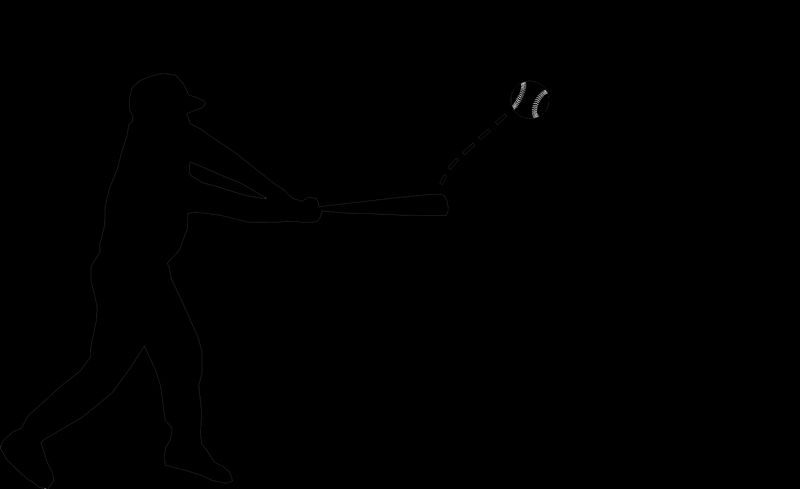Introduction to the constraints-led approach
The constraints-led approach (CLA) is a framework for teaching, coaching and practicing motor skills. It takes a holistic and individual approach to learning by considering the interactions between different ‘constraints’: the performer, the environment and the task. The CLA advocates a hands-off -approach, where the coach designs the environment and directs learning by manipulating the constraints, rather than using prescriptive instructions and corrective feedback. The learner is challenged to find his own functional movement solutions through variable practice and trial and error[1]. The CLA is not a magic bullet for all learning situations, but according to preliminary evidence[2], it is an exceptionally well suited method for efficient motor skill practice.
The constraints-led approach is based on a theoretical framework called ecological-dynamics[3] Having a solid understanding of this theoretical foundation will allow you to implement the CLA in your practice with more confidence and flexibility. Before diving into this one, I would encourage you to take a look at other articles on ecological dynamics, dynamical systems theory and ecological psychology.
In this summarizing article we’ll first take a brief look at three underlying concepts in the CLA: the interacting constraints, the action-perception coupling and body’s self-organization. Then we’ll look at the CLA coaching principles.
What are constraints? #
Constraints are physical or abstract boundaries, within which learners can search and explore movement solutions.[4] Constraints are classified into three categories: performer, environment and task constraints.[5]
- Performer constraints are characteristics that relate to physical and functional aspects of the performer. For example height, strength, mood or motivation are performer constraints.
- Environmental constraints can be physical or sociocultural: gravity, weather, surface materials, obstacles, cultural norms or family support.
- Task constraints include rules, objectives, playing areas, number of players, equipment and information sources present. They are the most relevant when developing movement skills as they are the easiest to manipulate.
All human movement emerges from the interaction of constraints. Therefore all training methods involve constraints. What sets the constraints-led approach apart from other training methods, however, is the deliberate manipulation of the constraints to guide learning.
For most people, the word ‘constraint’ carries a negative connotation of restricting or limiting something. In the constraints-led approach, ‘constraint’ refers to the scientific meaning of information to shape or guide a system.[6] Information, and more precisely the perception of information from the environment, is indeed at the core of constraints-led approach.
Constraints + action and perception = movement #
Consider that you are going to a friend’s place and you see a staircase and an elevator. Depending on your current mood (performer constraint), amount of stairs (environmental constraint) and whether you are in a hurry or not (task constraint) you end up making a decision between using the elevator or the staircase to get to your friends door.
Human movement therefore is always a complex interaction between the task, the environment and the performer. Our action depends on the perception of these constraints, but also our perception changes as we do actions.
On your way running up the stairs (action) you might notice getting all sweaty and you see that you have still four flights of stairs to go (perception). So you might decide to call the elevator (action) after all, if you had a tiring day. If you are currently trying to improve your stamina however, you might feel happy with the exhaustion (perception) and keep walking up (action). Action and perception therefore always follow each other in cyclical nature, or as James Gibson put it:
“We must perceive in order to move, but we must also move in order to perceive.”
GIBSON (2014, P.213)
This same chain of action and perception, or ‘action-perception coupling’, applies to all human movement from picking up a coffee cup to operating a fighter aircraft, or receiving a pass in football to approaching a wall in parkour.

When designing lessons and learning environments it is important to maintain this link between action and perception. In the constraints-led approach action and perception are always tightly coupled, as learners have to make their own solutions based on the information present. We will discuss this in more practical terms later.[7]
Humans are complex systems #
Another fundamental idea in constraints-led approach is that a human is considered as a complex system, that needs to organize itself in order to produce functional movements.[8] As discussed in the article on the dynamical systems approach, complex systems are made of multiple different parts interacting with each other, like an ant colony, the climate or the human body.
Consider the action of calling the elevator from the previous example. Out of all the possible directions your arm muscles and joints could take, you organize them to travel towards the call button to press it. Then consider an acrobat performing backflip on a tightwire. How does the body know what to do?[9] This process of producing functional movements is called self-organization.
You can think a self-organization process of a child who is learning to walk. His first steps are clumsy and his legs rigid, but after a lot of practice in different places, he slowly starts to organize his legs, hips and arms more fluidly. Indeed, for the self-organization process to become fluent and natural in any skill, it requires a lot of practice with a lot of variation. If you’re interested to know why this is so, take a look at the articles on variation and dynamic systems approach.
Characteristics of the constraints-led approach #
To understand how to use the CLA, and why it might be an efficient method, let’s examine an example from the literature. In a 2018 article[10], Rob Gray compared the CLA with more traditional methods for the training of experienced baseball batters. The focus was to increase their launch angle. The traditional methods consisted of giving technical cues and feedback (information about the ball’s launch angle, velocity, etc.). In one of the groups, the cues were focused on the body (“move your arms at an upward angle”, etc.), while in the other they focused away from the body (“contact the bottom half of the ball”, etc.). In contrast, the CLA group had to hit the ball over a barrier placed on the field. If the attempt was successful, the distance of the barrier was increased, and decreased if the attempt was unsuccessful.

After 6 weeks of training, the CLA group had higher launch angle and exit velocity, and achieved more fly balls and home runs than the other groups. The internal focus of attention (focusing on the body) group had the worst outcomes. This suggests that traditional methods inviting the practitioner to focus on minute technical details might lead to poor learning outcomes, and that the CLA is a good replacement candidate.
Let’s examine a few of the characteristics of the CLA to understand better what sets it apart from other methods.
The first point is that it considers the coach as an environment architect or designer, who directs learning by manipulating the constraints and information sources in the environment, rather than as an instructor whose role is to give instructions and feedback. Constraints are not used randomly, but in a systematic and intentional way, with a specific learning outcome in mind. Constraints set the boundaries for the most functional movement solutions, so making changes to constraints directs learning to new solutions. The chosen constraints invite (afford) certain behaviours, while excluding others. In our example, we see that having to overcome a barrier pushes the learners to adapt their movements, increasing their launch angle. Teaching is therefore all about channeling the learner to find optimal movement solutions as a result of body’s self-organization processes. Other examples might be to change the rules of the game to encourage a certain type of passing in football practice, setting up cones to change stride length in athletics or moving obstacles to spark different types of parkour movements.
As movement is based on information, it is important that information during practice is similar to information in the performance context (game, competition or “real-world” application). This means that practice environments and exercises should resemble performance environments. If not, there might be little to no transfer, meaning that what is learnt will not be applicable outside of the practice situation. We call this principle representative learning design. Our baseball example happened in a virtual simulation apparatus. Therefore it was not identical in all respects to a performance environment. But the important point is that the relevant information sources should be similar. A (well designed) simulated pitcher is probably not that bad, because you can use information from his (virtual) body to anticipate the movement of the ball, which you cannot do with a robot pitcher. For the same reasons, we should avoid breaking down skills into parts, because they might work differently when practiced in isolation than when used together. As another example, small-sided games are usually better than closed drills as they maintain the aspect of following and adapting to the movements of other players[11]. Because we’re talking of self-organisation and adaptation, we want to make sure we are adapting in a way that is also functional outside of the artificial practice contexts.
The CLA is not interested in one optimal technique, but in optimal outcome. Because every performer is unique, individually optimal movement solutions and techniques might be very different[12] . Furthermore, as practice is not about replicating the correct technique, a great amount of variability and errors is therefore a natural and important part of learning. Practice sessions should be designed to provide enough possibilities for variety and enough room for trial and error[13]. We call this principle repetition without repetition. The baseball players in the CLA group didn’t need to focus on reproducing a stereotypical pattern of movement. They could try different techniques while staying focused on their objective of sending the ball over the barrier. All means and resources could be used, as long as they served this objective.
Because the CLA guides learning by modifying constraints rather than with explicit instructions, and because the focus is on the outcome, the attention of the practitioner is focused outside his body. This is called an external focus of attention and it is often considered more beneficial for learning[14]. We already saw that in our baseball example, the external focus group had better learning outcomes than the internal focus group. The CLA harnesses this effect, while not simply boiling down to a traditional use of the external focus of attention, because it adds a layer: the manipulation of constraints.
Conclusion #
The constraints-led approach is a tool for teachers and coaches to design effective motor skill practice. It is based on the idea that movement is guided by boundaries called constraints. As we perceive the environment in relation to our abilities and the task at hand, action follows. Action in turn changes what we perceive. The body is considered a complex system, that needs to self-organize in order to produce goal-oriented movements. This self-organization process requires practice with a lot of variability and exploration.
Using the CLA means manipulating the constraints of the task, performer and environment in a systematic way, in order to invite skillful behaviour. The design of the training situation should be representative of the performance context, in order to facilitate skill transfer. The practice should allow for exploration, variability and trial-and-error, rather than focusing on repetitive drills meant to perfect an ideal, stereotypical technique.
Davids, K. W., Button, C., & Bennett, S. J. (2008). Dynamics of skill acquisition: A constraints-led approach. Campaign, IL: Human Kinetics. Chow, J. Y., Davids, K., Button, C., Rein, R., Hristovski, R., & Koh, M. (2009). Dynamics of multi-articular coordination in neurobiological systems. Nonlinear Dynamics Psychology and Life Sciences, 13(1), 27-52. Gibson, J. J. (2014). The ecological approach to visual perception: classic edition. Psychology Press. p.213 ↩︎
Gray, R. (2018). Comparing cueing and constraints interventions for increasing launch angle in baseball batting. Sport, Exercise, and Performance Psychology, 7(3), 318-332. ↩︎
Davids, K. W., Button, C., & Bennett, S. J. (2008). Dynamics of skill acquisition: A constraints-led approach. Campaign, IL: Human Kinetics. ↩︎
Chow, J. Y., Davids, K., Button, C., Rein, R., Hristovski, R., & Koh, M. (2009). Dynamics of multi-articular coordination in neurobiological systems. Nonlinear Dynamics Psychology and Life Sciences, 13(1), 27-52. ↩︎
Newell, K. M. (1986). Constraints on the development of coordination. Motor development in children: Aspects of coordination and control, 34, 341-360. ↩︎
Renshaw, I., Davids, K., Newcombe, D., & Roberts, W. (2019). The Constraints-Led Approach: Principles for Sports Coaching and Practice Design. Routledge. p. 14 ↩︎
The article on ecological psychology provides a more in-depth look at human interaction with the environment. ↩︎
Davids, K. W., Button, C., & Bennett, S. J. (2008). Dynamics of skill acquisition: A constraints-led approach. Campaign, IL: Human Kinetics. ↩︎
This is the famous Degrees of Freedom problem (DOF) ↩︎
Gray, R. (2018). Comparing cueing and constraints interventions for increasing launch angle in baseball batting. Sport, Exercise, and Performance Psychology, 7(3), 318-332. ↩︎
Davids, K. W., Button, C., & Bennett, S. J. (2008). Dynamics of skill acquisition: A constraints-led approach. Campaign, IL: Human Kinetics. ↩︎
Davids, K. W., Button, C., & Bennett, S. J. (2008). Dynamics of skill acquisition: A constraints-led approach. Campaign, IL: Human Kinetics. ↩︎
Chow, J. Y., Davids, K., Button, C., Rein, R., Hristovski, R., & Koh, M. (2009). Dynamics of multi-articular coordination in neurobiological systems. Nonlinear Dynamics Psychology and Life ↩︎
Davids, K. W., Button, C., & Bennett, S. J. (2008). Dynamics of skill acquisition: A constraints-led approach. Campaign, IL: Human Kinetics. Wulf, G., Höß, M., & Prinz, W. (1998). Instructions for motor learning: Differential effects of internal versus external focus of attention. Journal of motor behavior, 30(2), 169-179 ↩︎

